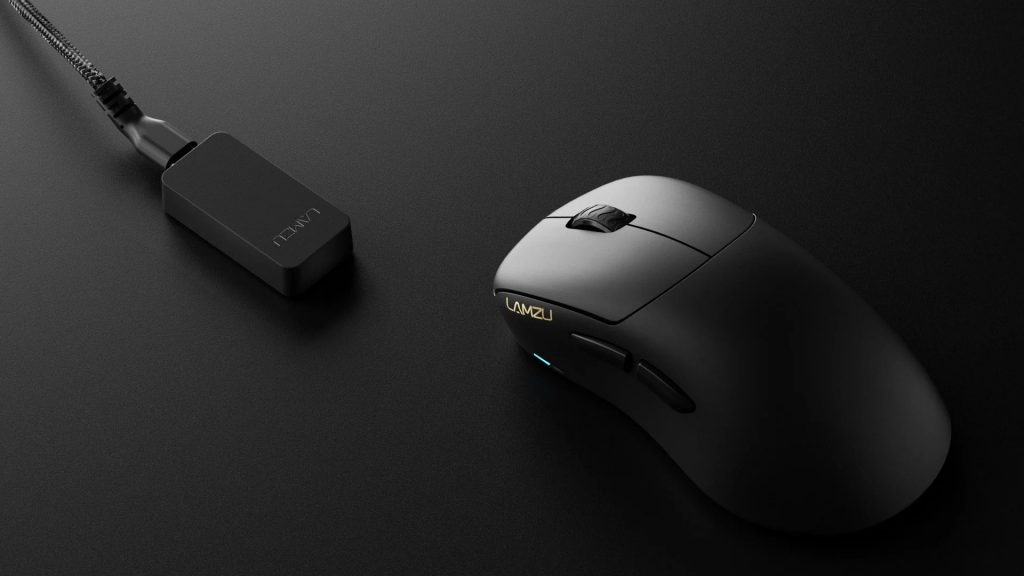
You’ve made the investment. A brand-new LAMZU gaming mouse—whether it’s the Atlantis, Maya, or Thorn—is sitting on your desk, promising ultralight agility and top-tier components. But taking it out of the box is just the first step. To truly dominate the competition, you need to dive deep into its software and configure the pro-level LAMZU settings that transform it from a great mouse into a lethal extension of your will.
Many gamers plug in their mouse and never touch the software, leaving a significant amount of performance on the table. Don’t be one of them. This comprehensive LAMZU software guide is designed for serious gamers who want to extract every ounce of potential from their hardware. We’ll walk you through firmware updates, critical software configurations, and advanced tweaks to achieve lower input lag and unparalleled responsiveness.
This is your technical manual for victory. And while we’re tuning your mouse for peak performance, remember that peak savings are just as important. You can always find the best deals and coupon codes for your next LAMZU purchase on our dedicated Prodynest coupon page.
Step 1: The Foundation – LAMZU Firmware Updates
Before you tweak a single setting, you must ensure your mouse and its receiver are running the latest firmware. Manufacturers like LAMZU frequently release updates that improve click latency, fix bugs, and enhance wireless stability. Skipping this step is not an option.
How to Update Your LAMZU Firmware: A Step-by-Step Guide
- Download the Driver: Navigate to the official LAMZU support/download page and get the latest software package for your specific model (e.g., LAMZU Atlantis settings software).
- Install and Launch: Install the software and open it. You may need a second mouse to complete this process smoothly.
- Update the Receiver (Dongle):
- Ensure the LAMZU wireless dongle is plugged directly into your PC.In the software, navigate to the settings menu (often a gear icon).Find the firmware section and click “Check Update” for the Receiver.
- Let the update process complete fully. Do not unplug the dongle during this time.
- Update the Mouse:
- Once the receiver update is done, unplug the dongle.
- Connect the mouse directly to your PC using the provided USB-C cable.
- Go back into the same firmware menu and proceed to select “Check Update” for the Mouse.
- Let the update finish completely without unplugging the mouse.
- CRITICAL – Restore Settings: After both firmware updates are complete, unplug the cable, plug the wireless dongle back in, and go to the main screen of the LAMZU software. Click the “Restore” button. This final step is essential to ensure the new firmware changes are applied correctly.
With your firmware up to date, you now have a stable foundation to build your perfect LAMZU settings.
Step 2: Dialing In Key LAMZU Settings in the Software
Now for the fun part. Open the LAMZU driver software to access the main control panel. Here, we will configure the most critical settings that impact your in-game feel and accuracy.
DPI (Dots Per Inch)
This is the sensitivity of your mouse sensor. There is no single “best” DPI; it’s highly preferential and depends on the games you play. Most professional FPS players use a DPI between 400, 800, or 1600.
- Action: Set your DPI to a comfortable level you are used to. A common starting point is 800 DPI. You can then adjust your in-game sensitivity to fine-tune your overall aiming speed.
Report Rate (Polling Rate)
Report Rate (Polling Rate)
Transition words have been added to improve the flow and connectivity of the content:
This setting determines how frequently your mouse sends its position data to your PC, measured in Hertz (Hz). A higher report rate means the cursor updates more often, reducing the delay between your physical mouse movement and the corresponding cursor response on screen. This is crucial for achieving smooth and precise tracking, especially in fast-paced gaming scenarios.
- 1000Hz:
- This is the industry standard for high-performance gaming mice. At 1000Hz, your mouse reports its position 1000 times per second, translating to a 1ms response time. This provides an excellent balance between performance and power consumption. Most gamers will find this setting delivers smooth cursor movement without unnecessary battery drain.
- LAMZU 4K Polling Rate (4000Hz):
- If you use the dedicated LAMZU 4K wireless dongle, you can increase the polling rate up to 4000Hz. This ultra-high frequency allows the mouse to report its position every 0.25ms, providing exceptionally fluid cursor motion that pairs perfectly with high-refresh-rate monitors (240Hz or above). This level of responsiveness can give competitive players an edge by minimizing input lag to nearly imperceptible levels. However, keep in mind this setting significantly increases power usage and may reduce battery life accordingly.
Interesting fact: While higher polling rates reduce input delay, they also demand more processing power from both the mouse and your PC’s USB interface. Therefore, not all systems or games benefit noticeably beyond 1000Hz.
Action:
For most users, set your Report Rate to 1000Hz to ensure responsive and energy-efficient performance. If you are a serious competitive player using a compatible setup with the LAMZU 4K dongle, switch to 4000Hz for maximum precision and ultra-smooth tracking during gameplay.
LOD (Lift-Off Distance)
LOD is the height at which the mouse sensor stops tracking after you lift it off the mousepad. For competitive gaming, a lower LOD is almost always better. It prevents unwanted cursor movement when you reset your mouse position during large swipes.
- 1mm: This is the lowest setting and the preferred choice for most competitive players. It ensures the sensor cuts off almost instantly when you lift the mouse.
- 2mm: Use this setting only if you find that the 1mm setting causes tracking issues on your specific mousepad surface (which is rare).
- Action: Set your LAMZU Lift-Off Distance (LOD) to 1mm.
Motion Sync
This technology synchronizes the mouse’s data reports with your PC’s polling interval, aiming for more consistent tracking. However, this consistency can introduce a minuscule amount of motion delay (around 0.5ms).
- On: Results in a smoother-feeling cursor path. Some players prefer this feeling of stability.
- Off: Provides the absolute rawest, lowest-latency input from the sensor.
- Action: For pure, unfiltered esports settings, it’s recommended to turn Motion Sync OFF. This prioritizes minimizing input lag over smoothness. However, this is highly preferential, so test it for yourself to see what feels better.
Step 3: Advanced LAMZU Settings for Peak Performance
These are the final tweaks that separate a good configuration from a pro-level one. These settings allow you to fine-tune the mouse’s responsiveness to your exact playstyle.
Debounce Time
Debounce is a delay added to a mouse click to prevent a single press from accidentally registering as a double-click. A lower debounce time means a faster, more responsive click.
- 0-2ms: This is the territory for competitive players seeking the absolute lowest click latency. Be aware that on mechanical switches, extremely low settings can potentially cause double-clicking over time, though this is less of an issue with the optical switches found in newer models like the LAMZU Thorn.
- 4ms: A very safe and still highly responsive setting that is recommended by many as a good balance.
- 8ms+: Generally too slow for competitive gaming.
- Action: Set your LAMZU Debounce Time to 2ms for a great competitive edge. If you ever experience accidental double-clicks, increase it to 4ms.
Peak Performance Mode
In the settings of some LAMZU Maya settings or Thorn software, you might find a “Peak Performance” or “Competitive” mode. This setting forces the mouse’s sensor to stay in a high-power, active state rather than entering power-saving modes quickly.
- Action: If available, enable LAMZU Peak Performance Mode. This ensures the sensor is always ready for your input, which is crucial for gaming mouse optimization. The trade-off is slightly reduced battery life, but for competitive play, performance is paramount.
Your Optimized LAMZU Settings: A Summary
Your Advanced LAMZU Mouse Setup
You’ve now set up your LAMZU mouse professionally. Your device is no longer just a tool; it’s a finely tuned weapon calibrated for precision, speed, and consistency. Below is a detailed summary of the recommended competitive settings for your LAMZU mouse to help you enhance your gaming performance:
- Firmware:
- Always update to the latest firmware versions for both the LAMZU mouse and its dongle. Firmware updates often include crucial optimizations, bug fixes, and improved sensor performance. This ensures your hardware runs smoothly with the latest enhancements.
- DPI (Dots Per Inch):
- Set your DPI to 800 by default, which is widely regarded as a balanced sensitivity for most competitive games. However, feel free to adjust this based on your personal aiming style and comfort. Lower DPI values offer more precise control, while higher DPI can speed up cursor movement.
- Polling Rate:
- Opt for a polling rate of 1000Hz to receive frequent input reports from the LAMZU mouse to your computer, reducing input lag significantly. If you have the advanced dongle that supports it and you prioritize ultra-high responsiveness over battery life, consider boosting this to 4000Hz—a setting that pushes performance boundaries further.
- Lift-Off Distance (LOD):
- Maintain an LOD at 1mm. This setting minimizes unintended cursor movement when you lift your LAMZU mouse off the surface during gameplay, allowing for quicker repositioning without losing tracking accuracy.
- Motion Sync:
- Keep Motion Sync off unless you have a specific reason to enable it. Disabling Motion Sync reduces processing overhead and avoids potential input delay caused by synchronization algorithms that may not be optimized for your setup.
- Debounce Time:
- Set Debounce Time at 2ms, which strikes an excellent balance between eliminating accidental double-clicks and maintaining rapid click registration. If you encounter double-clicking issues over time, consider increasing this value cautiously.
- Peak Performance Mode:
- Enable Peak Performance Mode if available in your LAMZU mouse software or settings menu. This mode forces the sensor to remain fully active at all times rather than entering power-saving states. While it slightly impacts battery longevity, it guarantees immediate responsiveness essential for competitive play.
- By following these detailed configurations, you’ve transformed your LAMZU mouse into an extension of your reflexes—a precision instrument designed to give you an edge in every match.
By implementing these LAMZU settings, you have significantly reduced potential input lag and optimized your mouse for consistency and accuracy. Now all that’s left is to build that muscle memory and dominate the server. And when you’re ready to expand your arsenal or recommend gear to a friend, remember to get the best price by checking our Prodynest LAMZU deals page. Happy gaming.

